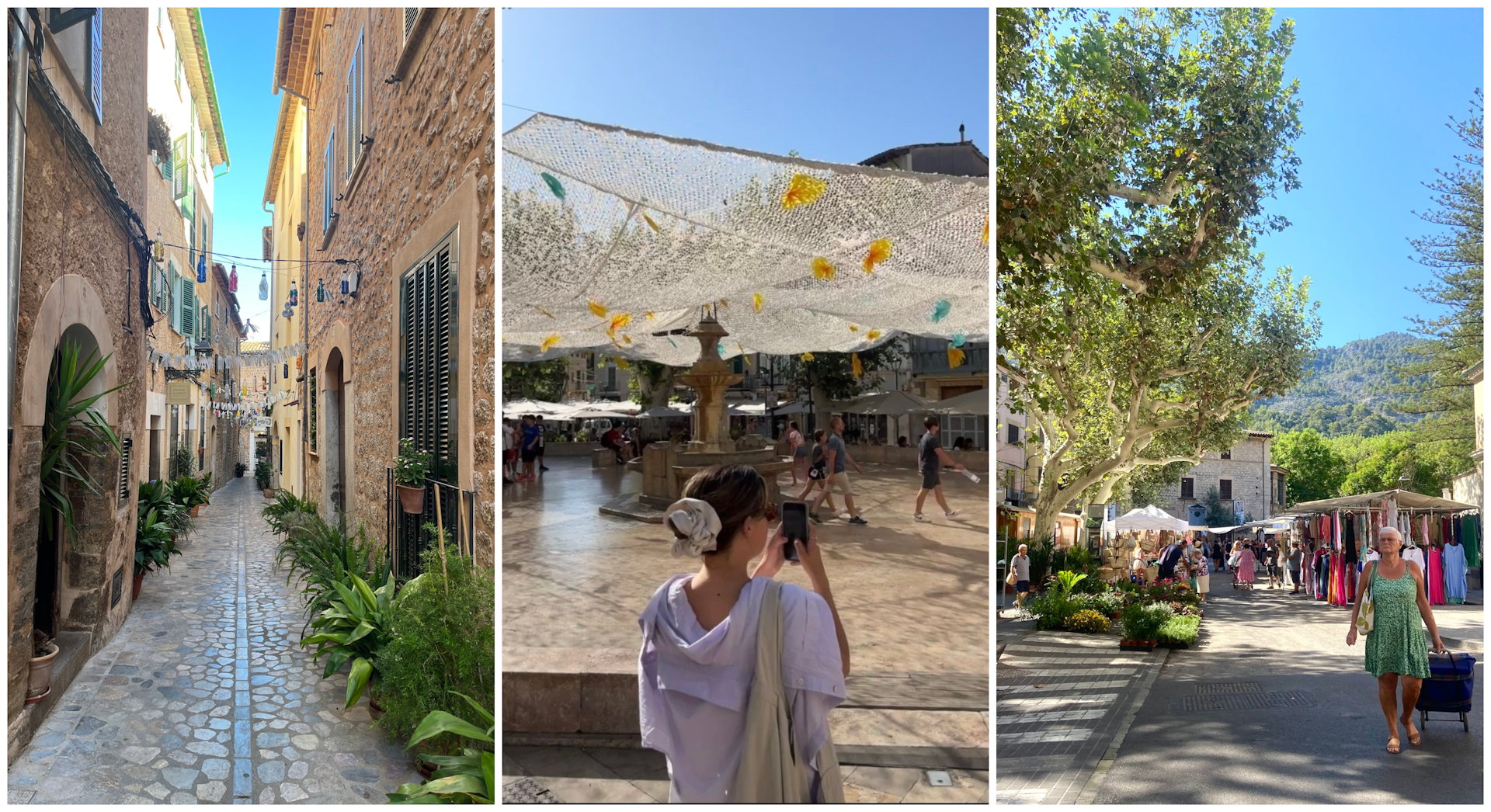While many Mallorcan itineraries begin in Palma, I prefer kicking off my vacation at a more relaxed pace in Sóller.
It’s a 35-minute drive from the airport and seems devoted to the things that make me happy: a laid-back atmosphere, a beautifully preserved historic square where families and neighbors gather in the afternoon to chat into the night and cobblestone streets that hide restaurants and traditional shops.
I love the honey-colored buildings and the fact that you’re never far from a view of the Serra de Tramuntana. It’s the perfect introduction to Mallorca. We’ll base ourselves here for much of the holiday as it provides easy access to Palma and the great beaches and villages.
When to arrive: Mallorca is lovely year-round. Winter sees many coastal resorts close, but it’s perfect for hiking the Serra de Tramuntana and Serra de Llevant mountain ranges or enjoying cozy farm stays inland. The sweet spots for most visitors are spring and autumn when the weather is mild and you can enjoy a variety of activities, but I prefer summer when it’s busy and vibrant and ideal for sun-worshippers.
How to get from the airport: If you’re staying in Palma, taxis and the EMT A1 bus, which runs every 15 minutes during the day and every 30 minutes at night, are convenient options. During summer, AEROTIB buses provide direct routes to major resorts like Alcúdia, Can Picafort and Cala Bona.
How to get around: The public transport system on the island is pretty good. Palma is well-connected with buses and taxis, and TIB buses link the capital with major tourist destinations across the island. However, for the itinerary I’ve created, you’re going to need a car. It’s the easiest way to explore Mallorca’s villages and hidden beaches, which are often only accessible by car.
What to pack: A light and comfortable wardrobe is your best bet in summer. Opt for breathable fabrics that keep you cool during the day and bring along a few dressier items for dining out. Locals typically dress up for meals (casual chic rather than done up) so you won’t see many people in beachwear at the table – it’s generally frowned upon. The west coast can experience occasional showers even in summer, so packing a light rain jacket is a smart move. Additionally, water shoes are a wise choice since many of Mallorca’s beaches are rocky, and they’ll save your feet from unwanted cuts and scrapes.
Day 1: Start your trip in Sóller
How to spend the day: Check into your hotel, and if you’ve rented a car (smart move), drop it off at the town’s underground public car park, which costs only €6 per day. Otherwise, it’s almost impossible to find parking on the narrow streets, and very few hotels have their own parking bays. Once settled, head towards the canopy-draped Plaça de la Constitució for lunch at one of the cafes and enjoy a self-guided tour of Sant Bartomeu cathedral, well worth a look for its impressive Modernist facade and golden shrines. Afterward, indulge in souvenir shopping along Carrer de sa Lluna; you’ll find some old-school shops here selling Mallorcan-leather crafted shoes and traditional homewares like handstitched floral and antique-style linen napkins and tablecloths.
Dinner: There are no late-night bars in Sóller, and dinner service usually ends at 10:30pm, which is unusual for Spain. Plan to head out at around 7pm. Some of my favorite restaurants in Sóller, such as Ca’n Pintxo, are tucked away down side streets. Ask to be seated at its candle-lit tables on the cobbled terrace to enjoy dishes like the catch of the day, presented as a silky ceviche dish and marinated in citrus and passion fruit juices.
Looking for souvenirs? Don’t miss Palma de Mallorca’s best independent stores
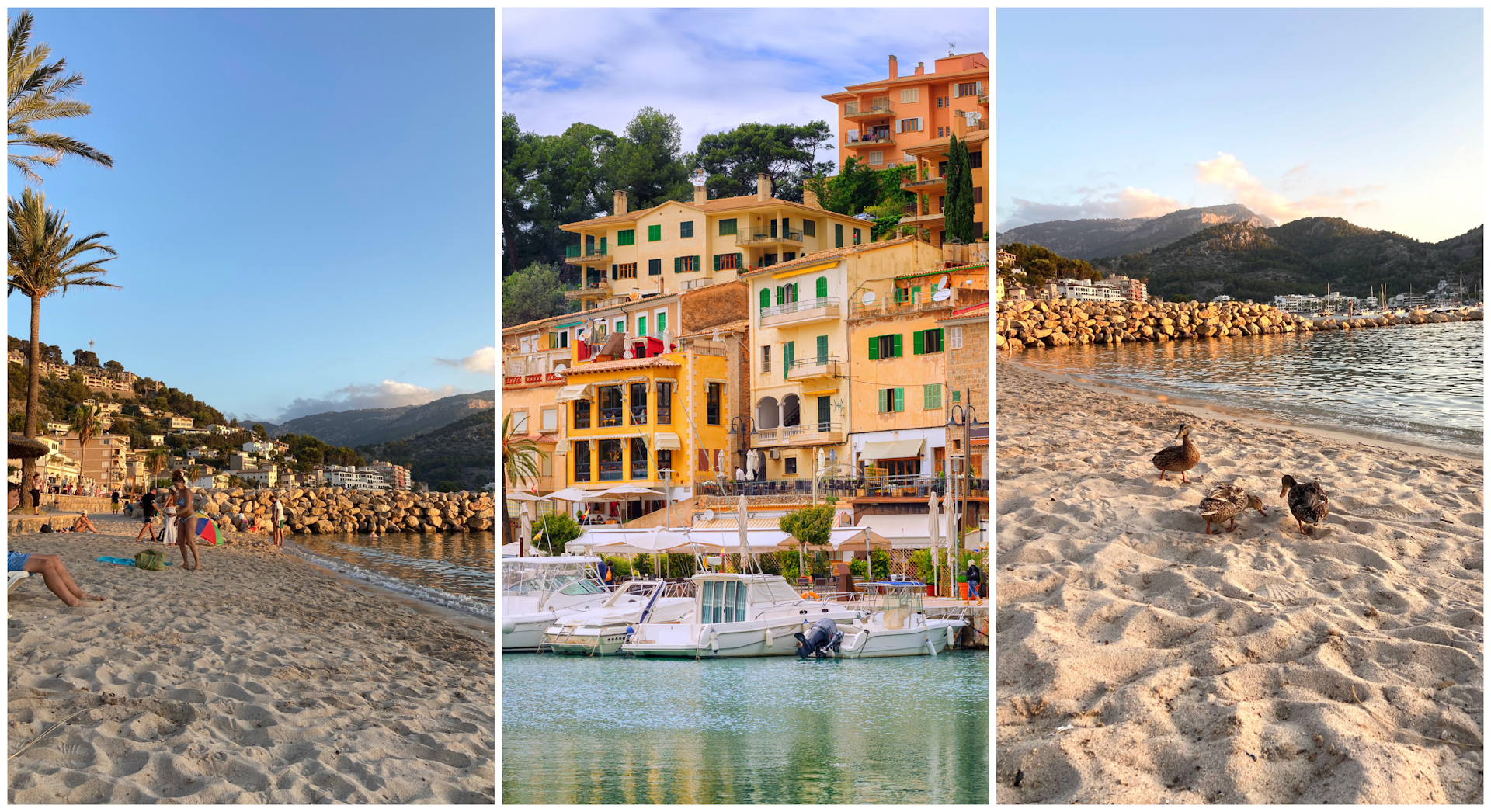
Day 2: Port de Sóller
Morning: Join the long line of sweet-toothed locals collecting their ensaïmadas (coils of flaky pastry dusted with icing sugar and sometimes filled with jam) from Horno San Cristo. Mallorca is known for ensaïmadas and they pair perfectly with a bitter espresso.
How to spend the day: Hit the beach! Port de Sóller is a 10-minute drive away, or you can take the wooden tram, which is a very cute and fun way to travel. There are two beaches here, the main Port de Sóller beach and Platja d’en Repic. Both have calm, clear waters and lifeguards on duty. You can rent sun loungers, lockers, and parasols for a flat day rate, and you’re surrounded by restaurants and bars. I like Patiki Beach for lunch, but I usually bring bread, cheese and chorizo from the supermarket and make my own picnic. Plus there are fruit vendors here ready to slice up a dragon fruit or crack open a coconut whenever you fancy.
Dinner: Enjoy a stunning sunset at the beach and then make your way to Ses Oliveres for a fresh seafood dinner with sparkling wine and beautiful views of the bay.
Here’s our pick of Mallorca’s best beaches
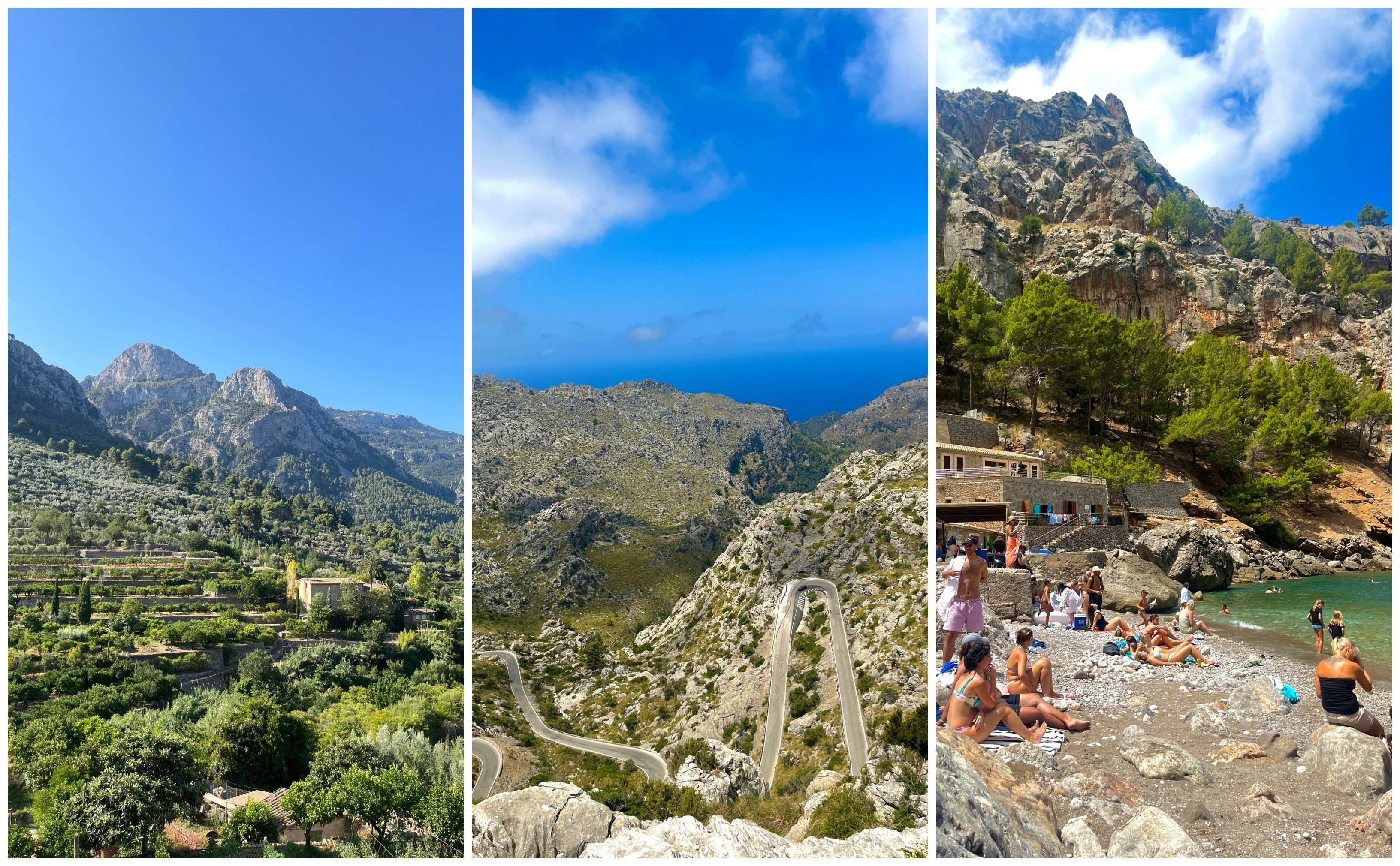
Day 3: Fornalutx, Sa Calobra and Pollença
Morning: Start your day with a scenic 15-minute drive to Fornalutx, often hailed as one of Spain’s most beautiful villages. The journey itself is a treat through lush greenery and gentle, winding roads. Have breakfast at Cafè Sa Plaça in the heart of the village and then go for a stroll through the knotted streets, admiring the beautiful window boxes that adorn each home. Stop at Panaderia de Fornalutx to pick up some traditional Mallorcan pastries for a sweet treat on the way to your next adventure.
How to spend the day: Continue on the MA-10 highway and brace yourself for the exhilarating (read: terrifying) drive to Sa Calobra beach. The MA-10, particularly as it snakes its way down to Sa Calobra, is famous for its hairpin turns, viewpoints and cliff-edge roads. Nobody warned me it’s known as “the wildest road on the island,” so I want you to be prepared. I’ll never do it again because I found it too scary, but the views are saga-worthy (take it slow), and Sa Calobra is a stunner. Aim to get there by mid-morning to secure a spot and relax on the pebble beach or take a short walk to Torrent de Pareis gorge.
Evening: End your day in the town of Pollença, a gorgeous town an hour’s drive away with wisteria-draped streets that once charmed Agatha Christie. As dusk settles, the town’s restaurants and bars come to life, with families gathering in the squares to enjoy ice cream and wine. Visit Amazo, a cozy spot offering hearty South American and Spanish fare, for dinner. It only seats 12, so call ahead. For a more relaxed drive home to Sóller, take the flatter and more straightforward MA-13 highway.
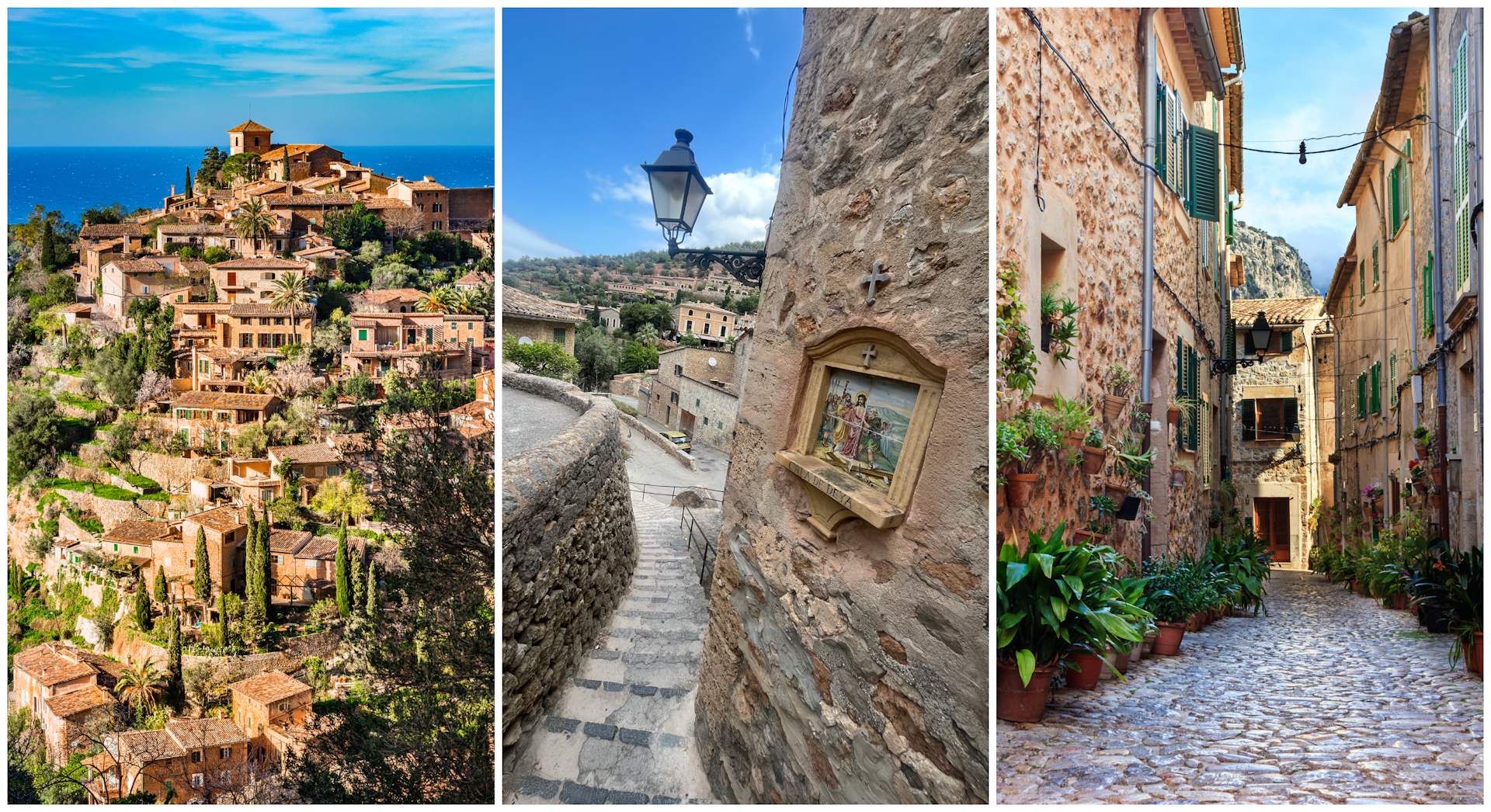
Day 4: Deià and Valdemossa
Morning: If you’ve ever searched for images of Mallorca on Instagram, you’ve definitely seen Deià. This charming and somewhat bougie spot is known for its artistic vibe, stunning scenery and celebrity holiday homes. It’s just a 20-minute drive from Sóller. Start with a visit to the poet Robert Graves’ grave in the hilltop cemetery that overlooks the village. Then mosey to De Moniö for coffee, a minimalist-styled vegetarian cafe that also sells handmade ceramics (perfect souvenirs). Then, drive down to Cala Deià, where you can enjoy a swim and have an early lunch at Ca’s Patró March, a restaurant overlooking the water.
How to spend the day: Drive for 15 minutes to Valldemossa, a town declared a World Heritage Site by UNESCO, to browse the bohemian shops and visit Real Cartuja de Valldemossa, a museum dedicated to the composer Frédéric Chopin and writer George Sand. The building is an old monastery and former royal residence that dates back to 1310. Whether you’ve eaten or not, your lunchtime priority should be La Posada, where you can sip wine with wood-fired steaks or fresh salads at the outdoor terrace overlooking Valldemossa’s sea of terracotta rooftops and olive groves.
Evening: Return to Sóller for your final evening here and enjoy dinner at C’an Llimona, a gorgeous family-run Italian restaurant that values quality produce. The pasta is made fresh every day and is exceptional.
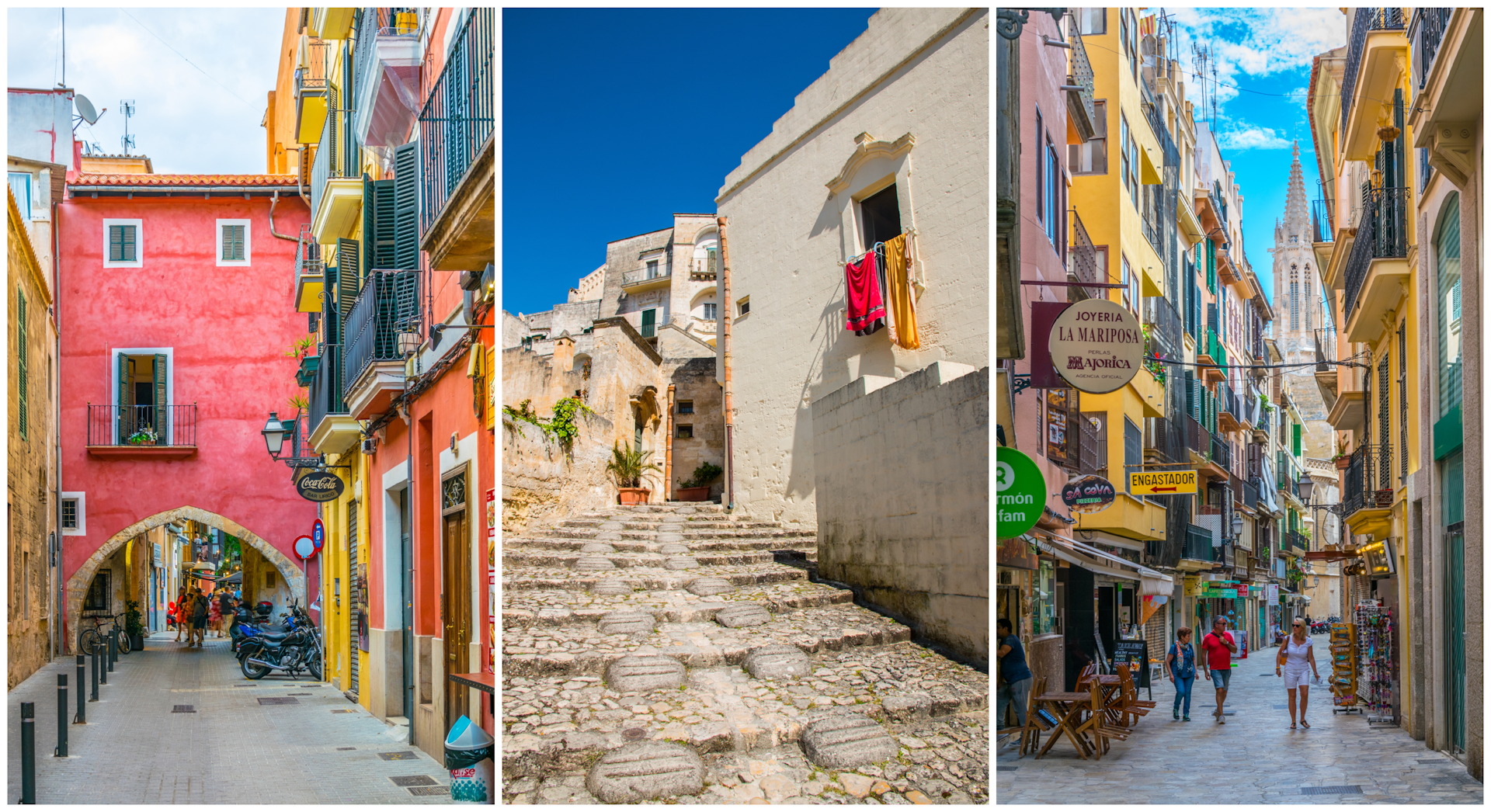
Day 5: Palma
Morning: Before leaving Sóller for Palma, visit Ecovinyassa, a stunning citrus orchard just a 10-minute drive away, where the air is filled with the fragrance of oranges and lemons. They offer tours on weekdays (except Tuesdays) from 10am, where you can sample freshly picked fruit, explore the beautiful grounds, and enjoy fresh juice and a light snack under the shade of the citrus trees—a languid and lovely way to spend the morning.
How to spend the day: Move on to Palma, Mallorca’s vibrant, art-filled capital. I like to stay in Santa Catalina. This is the home of every second Palma creative so expect to find live music, dog-friendly bars and some sort of sweet treat on every street corner. Once you’ve checked in to your hotel, explore the historic Old Town, visiting the magnificent La Seu Cathedral, and browsing concept stores such as Rialto Living and La Pecera and smaller spots like Mimbrería Vidal to find that “oh this? I picked it up in Mallorca” piece.
Dinner: Grab a seat near the open-plan kitchen at Vandal in Santa Catalina where the menu reads like a map of the world with influences from South America, Asia and Europe. It’s loud, so not the place for an intimate dinner, but it’s fun. Spring for the plump and sweetly flavored beef bao and burrata with fried zucchini flower. After, seek out the blink-and-you’ll miss it jazz-infused speakeasy Door 13. You’ll need a password to enter, which is usually shared on its social media.
Need more info? Here’s our first-timer’s guide to Palma
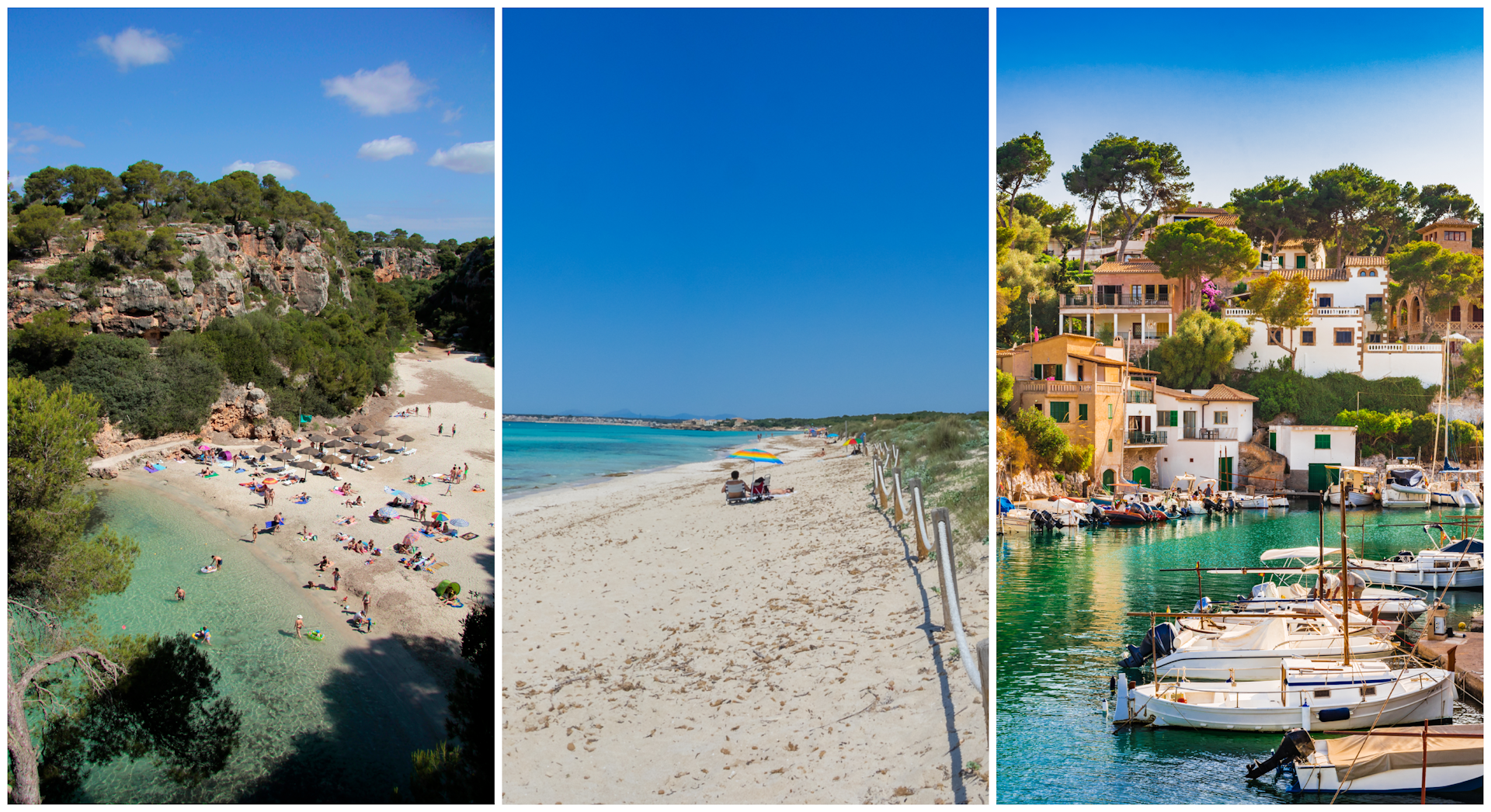
Day 6: Cala Pi and Santanyí
Morning: Wake up early, grab some snacks and fresh fruit from a nearby supermarket (Spanish supermarkets are elite) and get ready for another beach day.
How to spend the day: Start the day at Cala Pi, a 45-minute drive from Palma. This is a traditional Mallorcan beach that I fell madly in love with – quiet and secluded (in the morning at least) with no facilities (hence the supermarket run before leaving). Bear in mind you have to walk down some pretty steep stairs to reach it. In the afternoon, you could drive 30 minutes to the white-sand Caribbean-esque beach of Platja des Trenc or 40 minutes to Santanyí, a small, slow-paced town where even the air feels gentle. There’s a beautiful beach here too and a market on Wednesdays and Saturdays (until 2pm).
Dinner: Stick around in Santanyí because it looks especially pretty during golden hour. Enjoy fresh paella at one of the beach clubs for dinner or truffle pasta in the courtyard of Es Cantonet. It’s about a 45-minute drive back to Palma.
Day 7: Palma
Morning: Don’t leave without visiting the Santa Catalina market. It has pretty much all the fresh produce you can think of, and you can pick up local honey, marmalade, hams and Mallorcan wines to take home. While there, go to Can Frau for an early tapas lunch.
How to spend the day: Continue to explore Palma’s charming neighborhoods or enjoy a relaxing beach day at Portixol, a former fishing village now a trendy seaside suburb of Palma. For a unique experience (one of my favorites), visit one of Mallorca’s glassware shops or warehouses. The island boasts a rich glassmaking tradition, and its oldest brand, Gordiola Glass Company, has been around since 1719. While there is a shop in Palma, a trip to the workshop in Algaida is far more thrilling. Here you can witness the art of handblown glassmaking in the museum – the €8 entry fee is well worth it – and peruse and shop various products.
Dinner: In Palma, go to La Rosa Vermuteria and Colmado, a vermouth bar with the most charming bartenders and a great selection of vermouth, beer and wine. Get the cheeseboard for dinner before heading to the airport. Adios!
Struggling to choose between Mallorca and Ibiza? Our writers can help
Find out the best places to eat and drink in Palma de Mallorca
